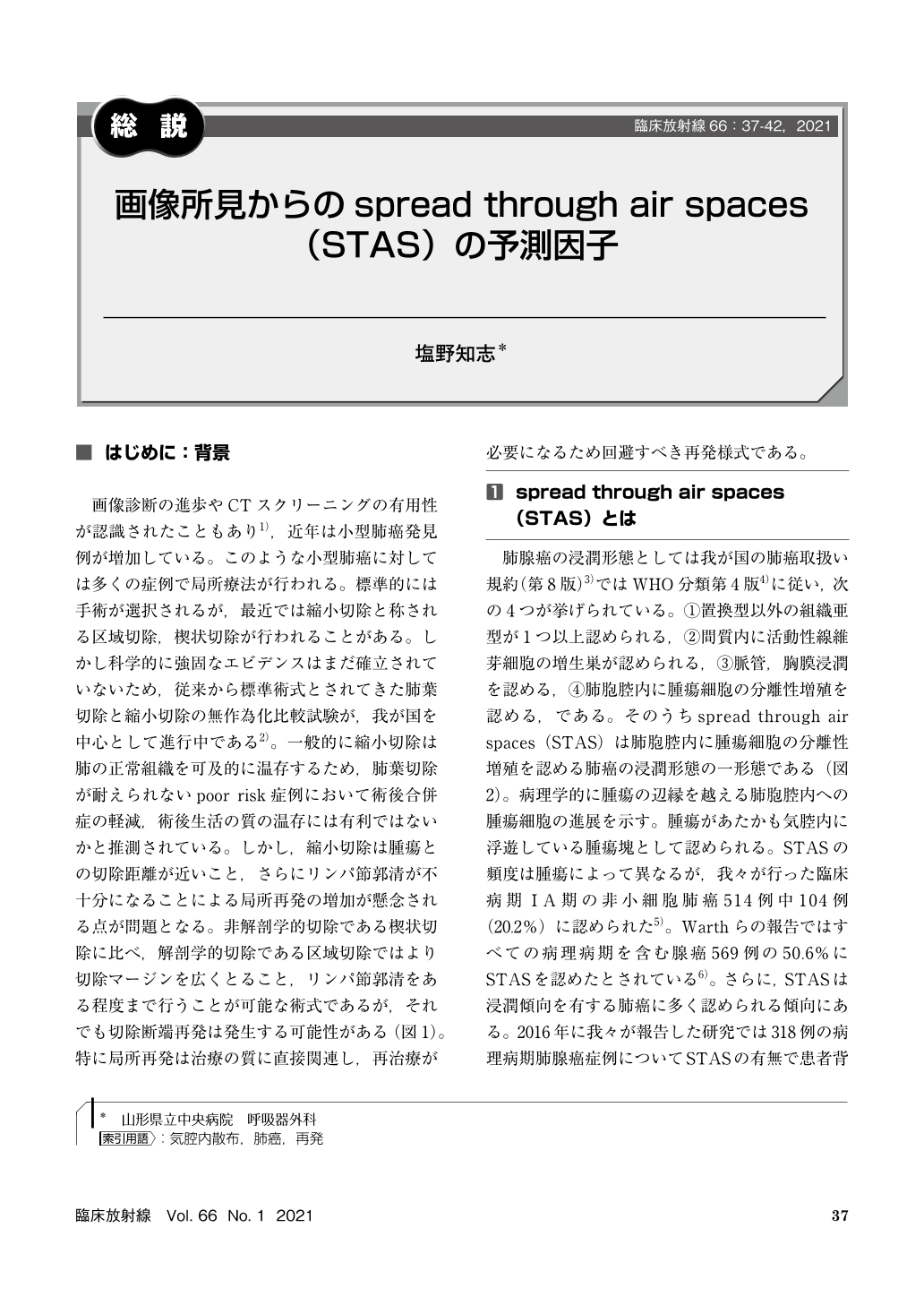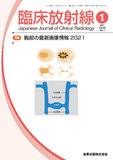Japanese
English
- 有料閲覧
- Abstract 文献概要
- 1ページ目 Look Inside
- 参考文献 Reference
画像診断の進歩やCTスクリーニングの有用性が認識されたこともあり1),近年は小型肺癌発見例が増加している。このような小型肺癌に対しては多くの症例で局所療法が行われる。標準的には手術が選択されるが,最近では縮小切除と称される区域切除,楔状切除が行われることがある。しかし科学的に強固なエビデンスはまだ確立されていないため,従来から標準術式とされてきた肺葉切除と縮小切除の無作為化比較試験が,我が国を中心として進行中である2)。一般的に縮小切除は肺の正常組織を可及的に温存するため,肺葉切除が耐えられないpoor risk症例において術後合併症の軽減,術後生活の質の温存には有利ではないかと推測されている。しかし,縮小切除は腫瘍との切除距離が近いこと,さらにリンパ節郭清が不十分になることによる局所再発の増加が懸念される点が問題となる。非解剖学的切除である楔状切除に比べ,解剖学的切除である区域切除ではより切除マージンを広くとること,リンパ節郭清をある程度まで行うことが可能な術式であるが,それでも切除断端再発は発生する可能性がある(図1)。特に局所再発は治療の質に直接関連し,再治療が必要になるため回避すべき再発様式である。
In the 2015 World Health Organization(WHO)Classification of Lung Tumors, spread through air spaces(STAS)was shown as a pattern of tumor invasiveness. STAS consists of micropapillary clusters, solid nests, or single cells beyond the edge of the tumor going into air spaces in the surrounding lung parenchyma. STAS is a significant risk factor for recurrence of lung cancers and survival after surgery. Preoperative radiographic detection of STAS is beneficial to decide surgical procedures and prevent a recurrence. Some papers showed that STAS is significantly associated with the presence of solid components of nodules in chest computed tomography.

Copyright © 2021, KANEHARA SHUPPAN Co.LTD. All rights reserved.


